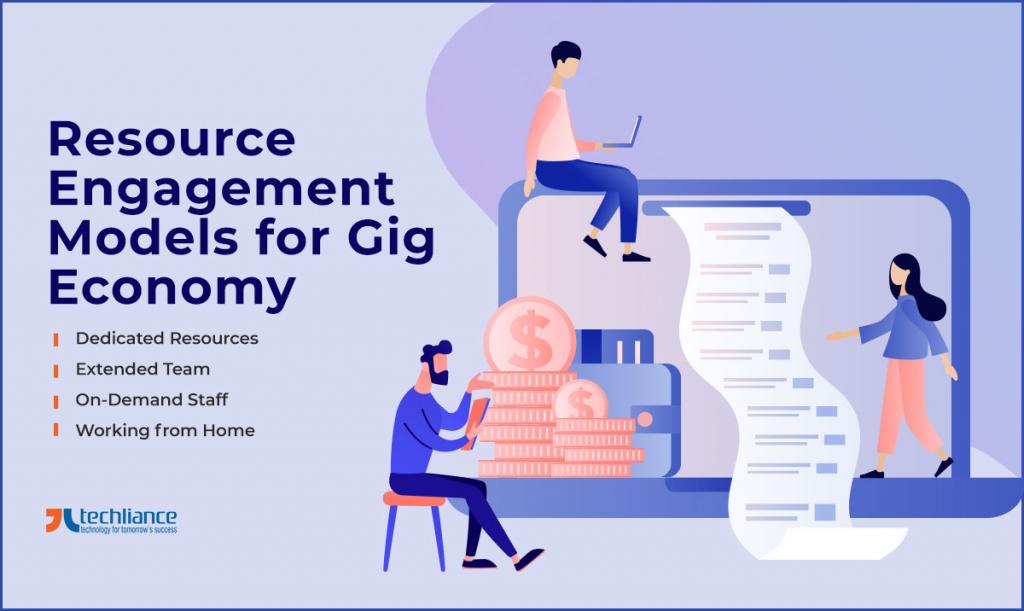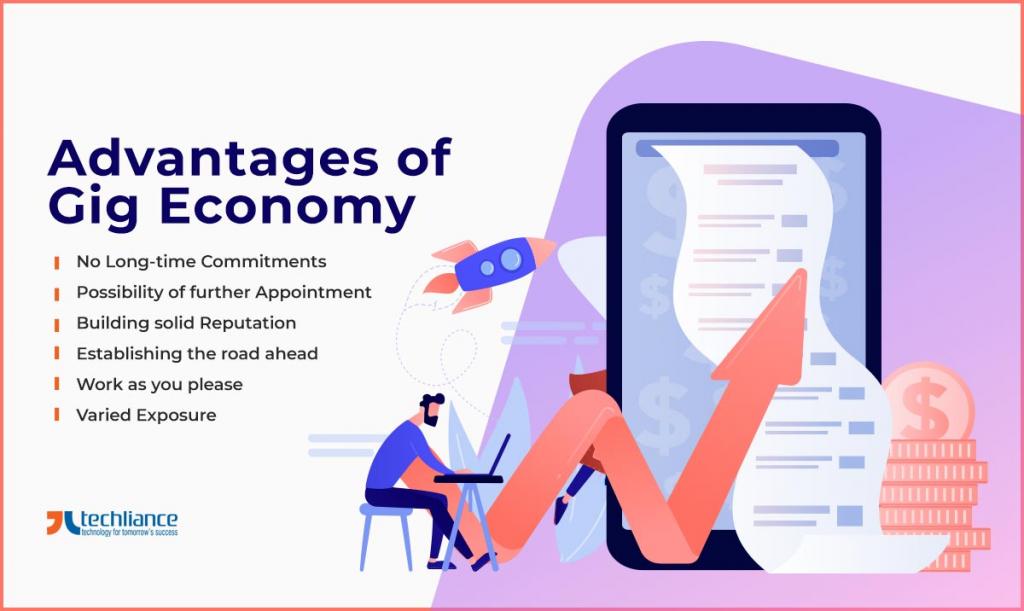Imagine working on a temporary contract or freelancing somewhat 50 years ago. This concept was completely unheard of where such a kind of work arrangement was considered unstable for the person. Fast forward to 2023 and terms like the gig economy, gig job, and gig worker have become mainstream globally.
Nowadays, working part-time, freelance, temporary, or contractual is so common that it’s known as a gig. There is a whole new economy based on such resources who are working on gigs. They are truly defining the gig economy now and for the future years.
Statista forecasts that the United States will house 85.6 million freelancers by 2027. Henceforward, freelance workers will constitute more than half of the U.S. workforce, an enormous 50.9% exactly.
Table of contents
- What is the gig economy?
- How does the gig economy work?
- Resource engagement models for the gig economy
- Advantages of the gig economy for resource engagement
- Final thoughts
What is the gig economy?
The gig economy is the economic activity surrounding temporary work assignments called gigs. It produces revenue for businesses and tech resources that don’t want total contractual obligations. Many companies and workers are embracing the gig economy due to its fewer contractual compulsions.
All statistics prove that the gig economy is a constant revenue stream for freelancers, dedicated and remote workers. These temporary and non-contractual employees have become a force to be reckoned with. So, these independent workers are directly influencing our work task force that is hiring these resources for short-term gigs.

How does the gig economy work?
In today’s world, the Internet is the driving force for a wide stream of businesses. Moreover, resources have become flexible in the kind of work they want to opt for. Nowadays, this means that a lot of people prefer to work from home. With the rise of mobile applications, a brand new app economy is fueling global financial markets.
Thanks to COVID-19, this has become more relevant, where a lot of jobs are now in online mode. Therefore, people are just connected through their machines and work collaboratively through the internet.
However, the gig economy inclines more towards business models that present resource engagement of suitable types. This allows freelancers, consultants, independent contractors, and momentary/seasonal staff to work on tasks or specialized jobs for a certain timeframe.
Once, their task is complete; they are paid off as per the contractual obligations and are then released. So, they can move on to their next gig, with some other company.
Resource engagement models for the gig economy
Let’s talk about the types of resource work engagement structures for the gig economy.

Now we discuss these features of the gig economy-driven resource engagement for both employees and businesses.
Dedicated resources
One of the primary advantages of gig workers is that they work completely and dedicatedly for you. They are exclusive to your project tasks for as long as they are contracted for.
The concentration and entire efforts of dedicated IT staff are to work as smoothly as possible. So that you are happy with their outcome and they are paid off for their work.
Therefore, they become short-term employees for the project and deliver work as per the agreement. The beauty of this working mechanism is that resources are exclusive and yet non-contractual.
Extended team
Are you looking for expertise in a particular subject/area but the requirement is only part-time? Then, hire the resources that become part of your team as an extension.
You can engage them for a short-term period. Once their tasks are completed, they can be released.
On-demand staff
Thanks to freelancing or demand-based engagement, you can have staff as per the need of your project. So, you can choose high-expertise resources, while reducing project duration and cost. This way you are dictating the terms for engaging resources as per your budget and capacity.
Working from home
Your home becomes your office. Most of freelancers or remote resources work from home or use co-working spaces. In some cases, they opt for cafes or similar places to work for dedicated hours on a remote basis.
Advantages of the gig economy for resource engagement
The gig economy offers many benefits for businesses and resources.
- No long-time commitments
- Possibility of further appointment
- Building solid reputation
- Establishing the road ahead
- Work as you, please
- Varied Exposure

We now explore the rewards that the gig economy has for the involved sides in 2023.
No long-time commitments
When you work with proper full-time employees, you have to cater to a lot of benefits apart from compensation. These include allowances, bonuses, medical, etc. that you need to pay off as per the contractual agreements.
However, with resources working part-time for your engagement; you only have to pay them for the tasks that they perform. Hence, you have to only compensate them for the projects without additional charges or costs.
Possibility of further appointment
It also helps resources to understand that they have to work well on the current engagements. Because they are likely to get additional work/assignments from the same client for good performance.
Similarly, clients can also refer them for similar tasks to other businesses. So, quality work continues to pay dividends with more work in the future.
Building solid reputation
Have you looked at Upwork, Fiverr, or similar websites where you can find resources of variable skill sets for hire? Most of the top-ranked resources are the ones who have done stellar work for their clients.
Based on their rating and recommendation, they can continue getting more gigs for themselves. So, a good reputation is key for constant work assignments during 2023 and the future.
Establishing the road ahead
A remote worker today can be a future startup company. The majority of such workers then go from strength to strength to hire or recruit similar resources under them.
They progress to create an IT firm that outsources their skills to businesses. This is how many tech powerhouses have come to the fore.
Work as you, please
Another plus point of working on a gig is that you are not bound to a typical work routine. Likewise, you don’t have to keep working perpetually for a company.
You work as and when you like, and that too on select work assignments. Additionally, you decide on the kind of work you want to opt for without any dictation from anyone else.
Varied Exposure
If you are a gig worker, then you are lucky to work on various kinds of assignments with varying complexity. Correspondingly, you get to undergo diverse challenges for many types of businesses and industries.
This allows you to attain a certain level of wide-ranging industry exposure. It is not likely possible; if you are working on assignments for one company, industry, or business for many years.

Final thoughts
In the coming years, the freelancing and outsourcing engagement will continue to grow. Because people are becoming more aware of their options to work. So, they take pleasure in doing work tasks that excite them from the comfort of their homes.
With this awareness, it is safe to say that the gig economy’s growth will increase in the future. Going forward from 2023, the phenomena will become pivotal in the way conventional jobs are perceived by us all.
Do you need to hire dedicated workers with top IT skills for your project? Contact Techliance today.
About the author




